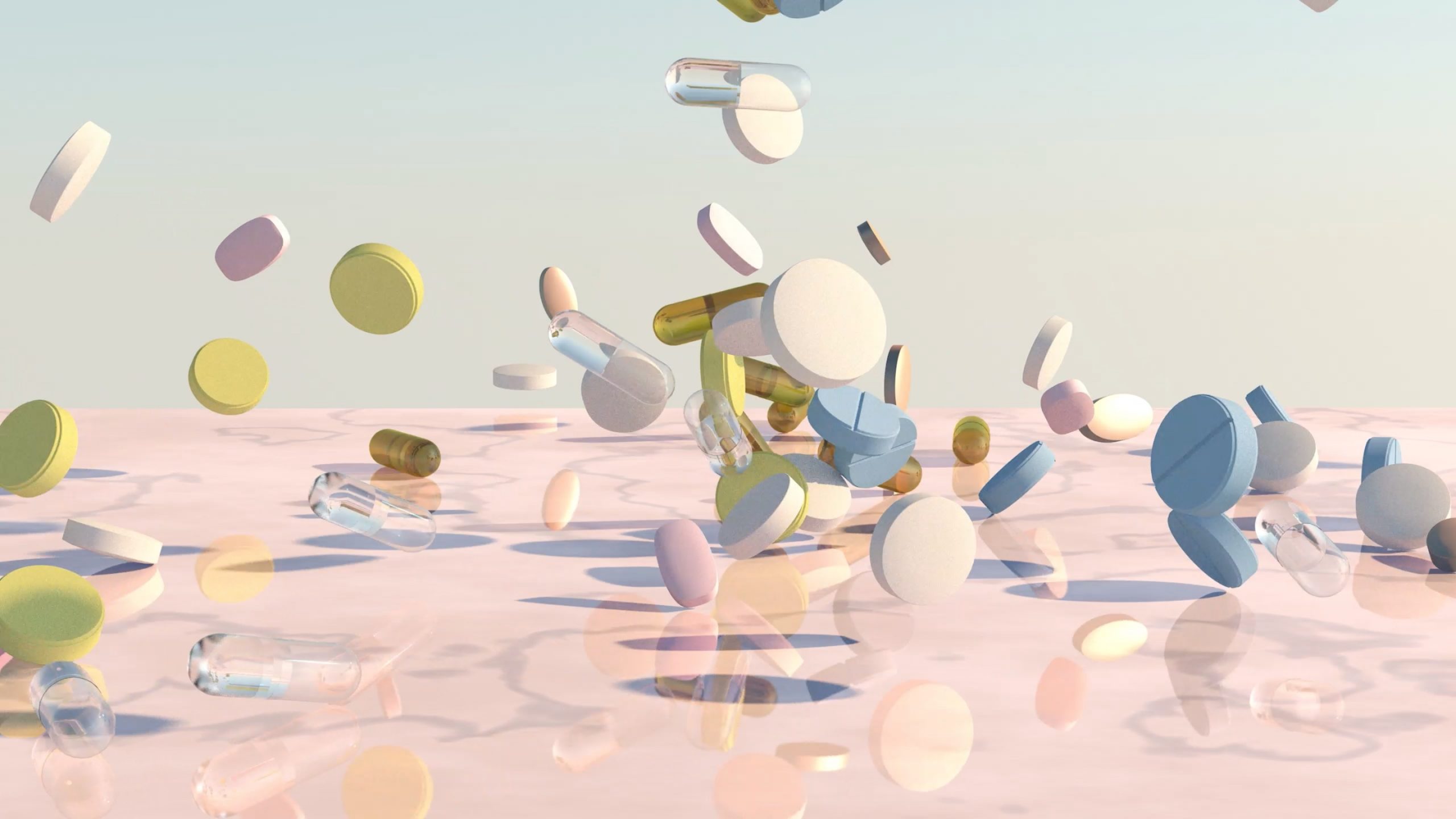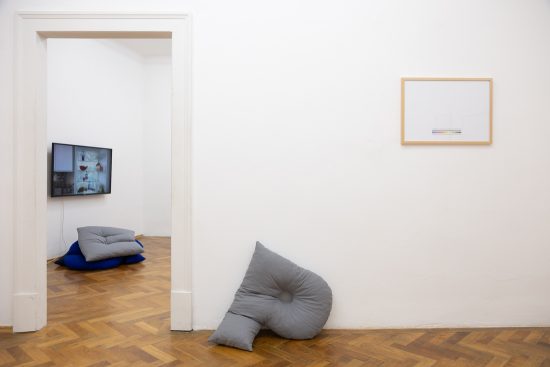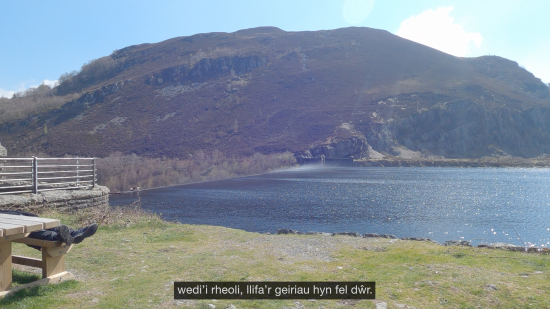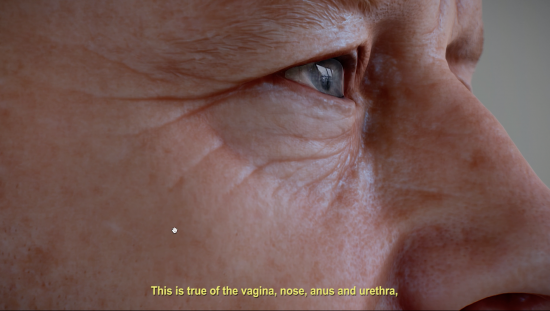Trailer ~ 3 mins
Access statement for trailer: There is music composed of drones and rhythmic beeps and clicks, reminiscent of an MRI machine, this structures the editing rhythm. There are captions which do not correspond to any spoken voice, and are visually designed in ways integral to the film. A transcript of the captions can be downloaded here. An audio described version of the trailer is in process and will be made available as soon as possible.
~
Long-Covid and the Culture of Disbelief, 2022
Single channel, UHD video, stereo sound
28 mins
~
Long-Covid and the Culture of Disbelief explores the socio-cultural context of Long-Covid and ME (Myalgic Encephalomyelitis) drawing on the artist’s personal experience of these related health conditions. Caught in the legacy of hysteria, throughout history the post-viral condition ME has been treated as psychological instead of biological, which has impeded both care and the development of medical knowledge. Long-Covid arrived into this setting, inheriting both a lack of knowledge and a culture of disbelief. This film commenced as a work about ME before the pandemic, and then responsively evolved as Long-Covid emerged and took hold in the world and the artist’s body. The film engages an idea of sickness that slips between personal, societal, and of film media itself conveyed through texture, rhythm, tone, disrupted time, and a self-reflective narrative. Loosely inspired by performative documentary forms, through a variety of imagery including found footage, personal archives, and substantial work in CGI animation, the film seeks to highlight the systemic culture of disbelief surrounding conditions like ME and Long-Covid, what this feels like, and to re-affirm a way of being embodied and orientated in the world.
In 1955 there was a viral outbreak at the Royal Free Hospital in London, UK, leaving many with a long-term condition characterised by fatigue, muscle pain, and muscle tingling amongst other symptoms, and ways similar to Long-Covid contemporarily. After a two-year study, the doctors of the Royal Free named this disease Myalgic Encephalomyelitis (ME). In 1970 two psychoanalysts wrote a paper that dismissed ME, and all cases that had come before it, as mass hysteria. They made this claim because more females than males were affected, dismissing medical findings in the process. This event caused ME to be classified as psychological, establishing an abusive culture of treating people with ME as if a disease was ‘all in their head’, as well as creating an impasse to further research in medical science. Although ME has been recognised as a biological illness and not a psychologic disorder since 1992, a culture of disbelief within the medical system still prevails. When Long-Covid emerged in the first wave of the pandemic, and people found themselves being issued with psychological diagnoses like ‘anxiety’ or ‘depression’ rather than having a post-viral condition, they were experiencing the culture of disbelief inherited from ME. The lack of knowledge about what Long-Covid is and how to treat it, is also a symptom of inheriting the culture of disbelief.
Informed by Harris’ sustained battle for understanding and care against medical gaslighting, and as a continuation of their experiences with ME and then Long-Covid from the first wave, the film explores what it is like to live with shifting, undone, revised and emergent diagnoses as a specific way of being orientated (and disorientated) in the world. Developed in iterative and mutable versions over several years, this film think about how moving image can speak, hold, or communicate aspects of being sick, crip or disabled that are important to conditions like Long-Covid and ME. Time is explored as a texture though juxtaposing image qualities – digitised monochrome 16mm, VHS, CGI – to speak of sickness that is both contemporary and rooted in the past, of shifting realities that come with missed or wrong diagnoses, and ultimately as a crip orientation to time, or crip time. Whilst CGI, as images suspended between belief and disbelief, are explored for their resonance with invisible disabilities where, and as the film reflects via the well know saying, “a film can look like this and still be sick”.
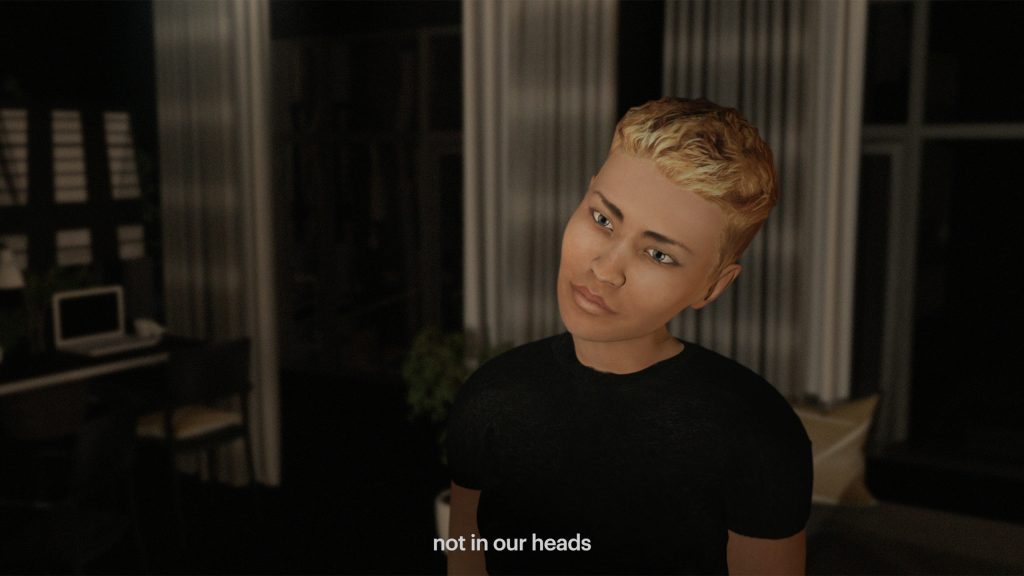

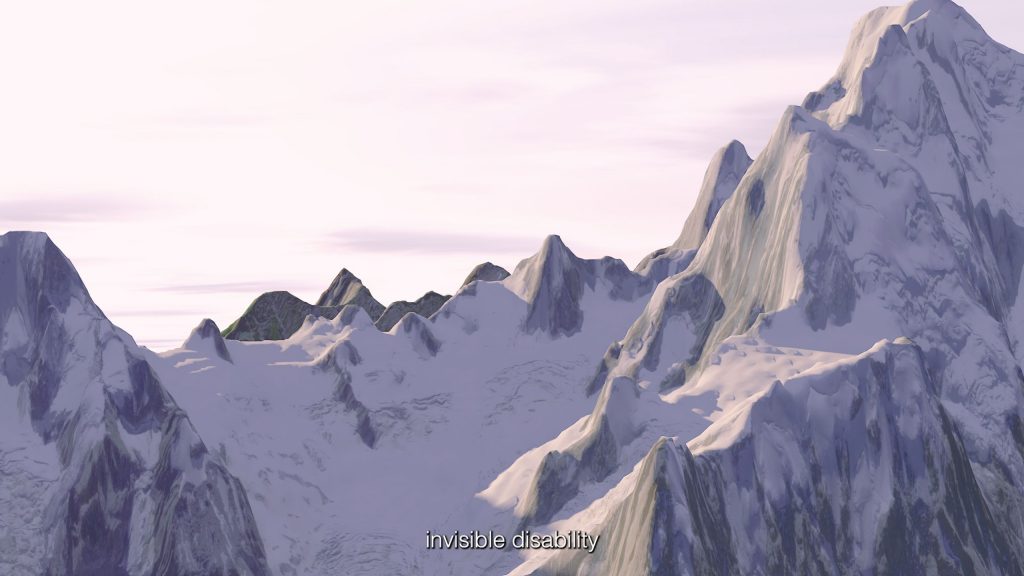
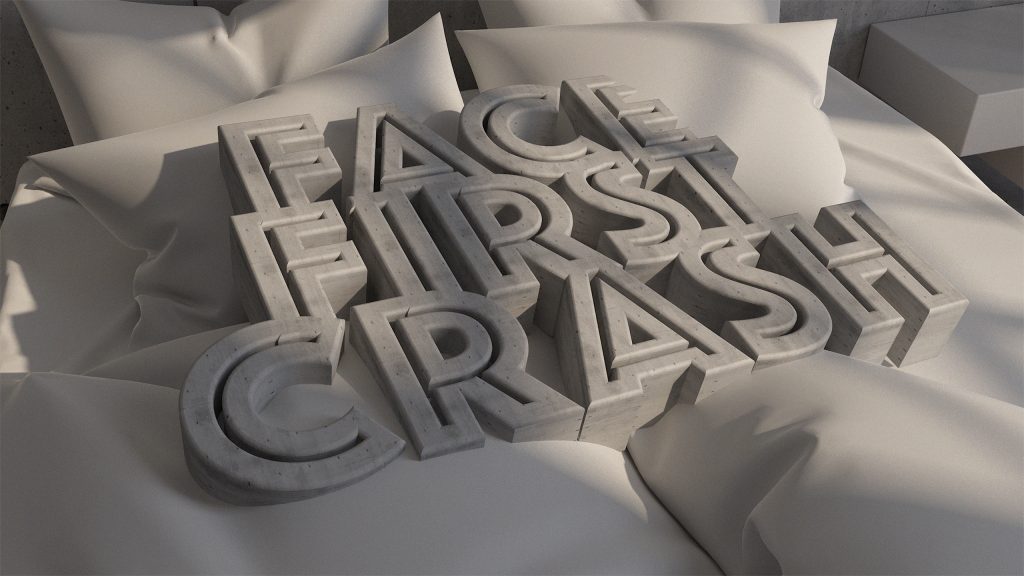
This film has been supported by CHASE AHRC Doctoral Training partnership,
Goldsmiths Time-Based Media Lab and Art Research PhD,
and the feedback and discursive support from Kristina Pulejkova and SPACE, London.
